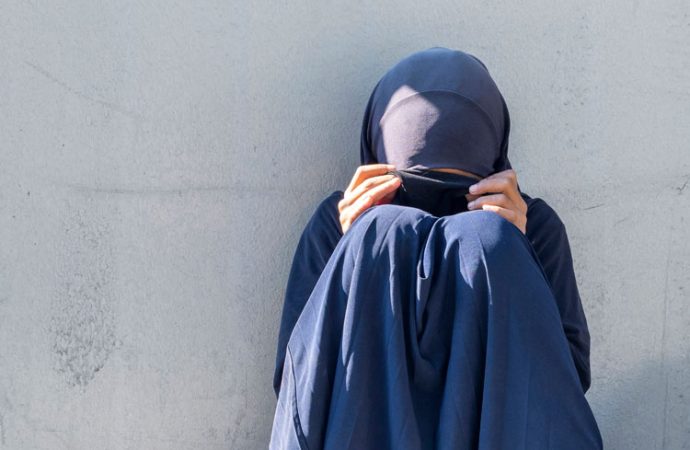Author Recent Posts Rameen Mufti Latest posts by Rameen Mufti (see all) Why Confidence-building Measures Between Pakistan and India Failed – February 7, 2023 TTP Resurgence in FATA – February 7, 2023 What to Improve in Pakistan’s National Security Policy – December 21, 2022
Federally Administered Tribal Areas merged with Khyber Pakhtunkhwa under the 25th Constitutional Amendment. The people of erstwhile tribal agencies have long been the victims of terrorist activities conducted by the Tehrik e Taliban Pakistan (TTP). The banned outfit is responsible for over 800 terrorist attacks between 2010 and 2020 in the region, according to USIP data. Bajaur, Mohmand, Orakzai, Khyber, North Waziristan, South Waziristan Agencies and Frontier Region (FR) of Dera Ismail Khan make up FATA. The resurgence of TTP and the rise in terrorist activities in 2022 have Pakistan in a tight spot.
TTP has a two decade long history of war against the state of Pakistan. After the fall of the Afghan Taliban (TTA) regime in 2001, several TTA and Al Qaeda militants crossed the Durand Line into the erstwhile FATA in an attempt to take refuge and regroup against the US-led coalition. However, the tides took a turn when Pakistan’s military began conducting operations in FATA that united factions and splinter groups of the TTA. The groups begun communicating and soon established themselves as an auxiliary group to the TTA. The TTP did not adopt an offensive strategy against Pakistan until the Red Mosque Operation in the capital Islamabad in which scores of militants were killed. Following the Red Mosque incident, a coalition of 40 senior Taliban leaders in Pakistan united the factions of Taliban under the new umbrella organisation named as the Tehrik e Taliban Pakistan. Baitullah Mehsud was appointed the emir. TTP had established its base in South Waziristan with three key aims: enforcing Shariah law in Pakistan, presenting a unified front to maintain control in Afghanistan and conducting defensive jihad against security forces.
In order to take control over tribal areas, the TTP established Waziristan as its base of terror operations. Waziristan provided TTP with a strategic advantage over Pakistan security forces due to porous border and mountaineous terrain. Bajaur remained under TTP’s control until 2007. It was also said to be Al Qaeda’s centre for conducting activities in NorthWest Afghanistan and Kunar. In Khyber, the TTP formed a coalition with Laskar e Islam enabling them to attack NATO supply convoys in the region, launch attacks in adjoining KP Province, and to disrupt economic activities at the Torkham Border.
There are several geo-cultural reasons for the Talibanization of FATA. Waziristan followed the Wazirwalla law that took a new shape after the US invasion of Afghanistan. Clergy became part of the jirgas that led to the alteration and abolishment of various Wazirwalla laws. After the fall of the Afghan Taliban, they provided them with financial and human resources. Clergy also convinced residents to support the Taliban as a matter of reward and moral responsibility. The geostrategic location of Waziristan was another advantage for the Taliban. It borders the Paktiya and Khost regions of Afghanistan which are the centre of terrorist activities. Along with this, the Wazir tribe resides on both sides of the border. The cultural transformation of Waziristan and its geostrategic location benefitted the militants’ smooth entrance into Pakistan.
Laws in Pakistan and its treatment of FATA contributed to the rise of the Taliban. The FCR, a British colonial Law, was still practised in the region. It had dehumanising clauses. It stated that tribal residents could be detained for up to 3 years to maintain peace, and individual crimes can lead to punishment for the whole tribe. Furthermore, FATA did not have participatory governance. Despite amendments in the FRC and FATA’s presence in the National Assembly and Senate, political parties had little grassroots presence. Taliban, with their Afghan-styled government and call for social justice, attracted the locals and filled the void created by political absence.
Since 2001, Pakistan has conducted many operations against TTP. In the first operation, Enduring Freedom, Pakistan supported the United States in capturing leaders of Al Qaeda and overthrowing the Taliban’s regime in Afghanistan. Operation Al Mizan lasted from 2002 to 2006, and the Pakistan military cordoned and cleared out 36 kilometres West of Wana, where the top TTP leadership had taken refuge. Operation Sherdil, in 2008, successfully killed more than 1000 militants. In 2009, the Pakistan military, with the support of the US, conducted targeted operations in South Waziristan. 2013-14 witnessed the deadliest attacks at R.A Bazar, District Courts, and Karachi Airport. In response, the government launched the largest counter-terrorism operation Zarb-e-Azab. Operation Radd ul Fasaad, in 2017, was launched to curtail terrorism and sustain progress towards a peaceful Pakistan.
TTP took a fall in 2016 owing to internal fragmentation and efforts of the Pakistan military. However, 2021 saw a stark rise in terrorist attacks yet again. In April 2021, the TTP claimed a suicide attack on a luxury hotel in Quetta, Balochistan, indicating the group’s intentions to expand operations beyond northwestern Pakistan. It has also heavily criticized the government of Pakistan for its decision on the FATA merger, and it remains contentious between the two parties. However, the culture in FATA is seeing a shift. Thousands of people took to the streets in South Waziristan, Bajaur and Swat to protest against the rise in terrorism. They demanded the elimination of good and bad Taliban.
With the FATA merger and changing of the culture of Waziristan, the government must take measures to establish its writ in the region, increase participatory democracy, fence borders and ensure the eradication of TTP with the support of the local population.
- Why Confidence-building Measures Between Pakistan and India Failed - February 7, 2023
- TTP Resurgence in FATA - February 7, 2023
- What to Improve in Pakistan’s National Security Policy - December 21, 2022












Leave a Comment
Your email address will not be published. Required fields are marked with *